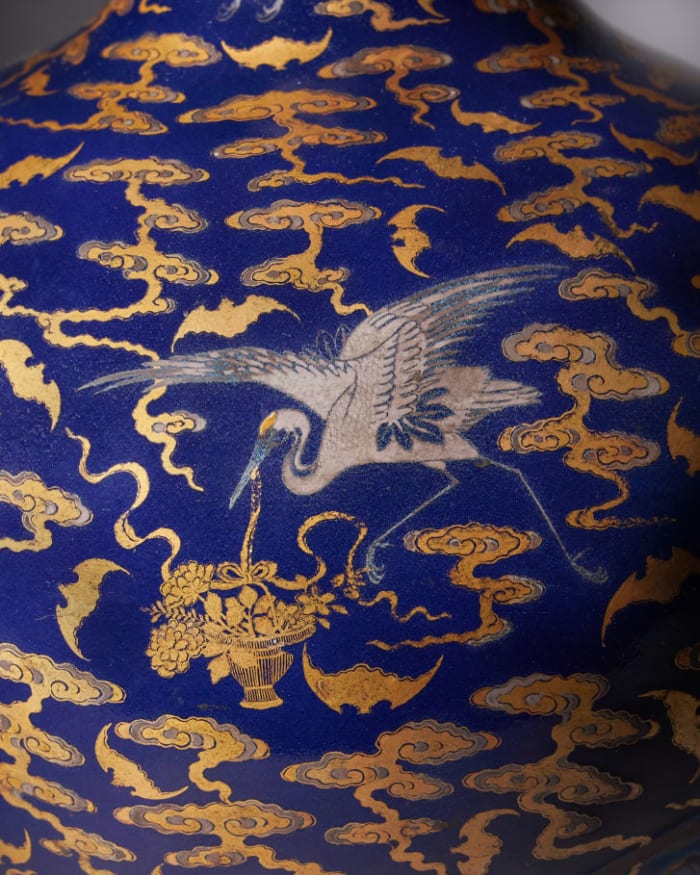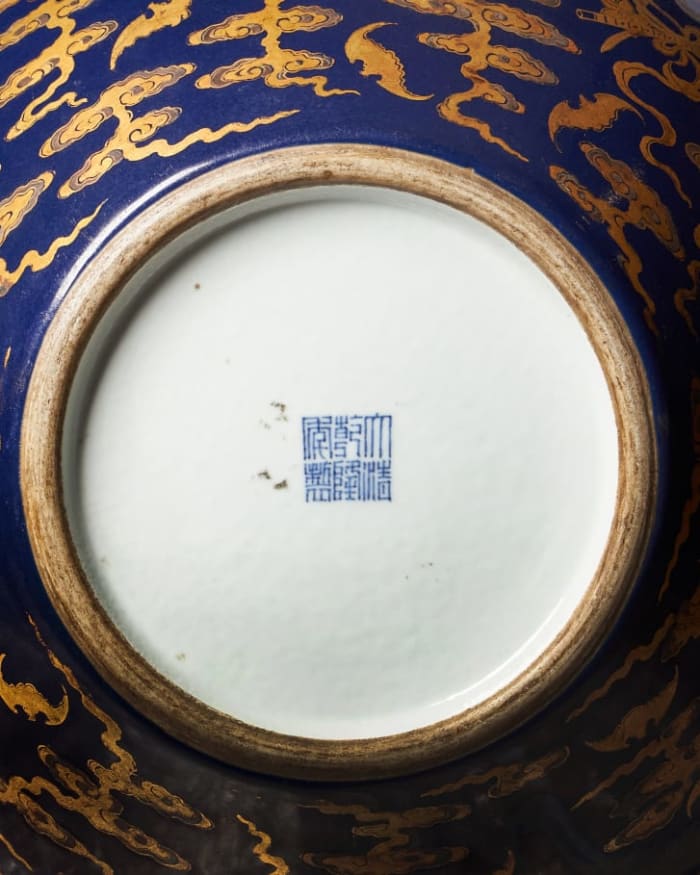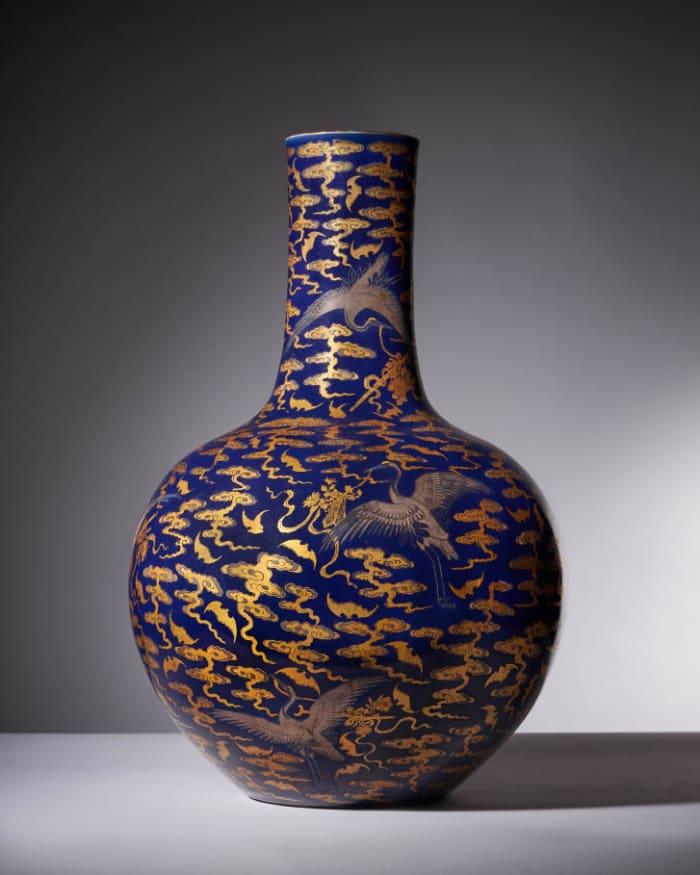#Chinese #Vase #Kitchen #Fetch #186K
A rare vase kept in a kitchen for decades could fetch $186,000 at auction, after it was discovered to be a rare Chinese artifact.
According to UK-based auction house Dreweatts, which is handling the sale later this month, the vase, dating to the 18th century and made during the Qianlong period, was bought by a surgeon in the 1980s for a few hundred pounds. He later passed it down to his son who, not realizing its value, kept it in his kitchen. It was only when an antiques specialist spotted it that its true value and history was discovered.
This rare vase kept in a kitchen for decades will be auctioned at Dreweatts on May 18, with a pre-sale estimate of $124,000 to $186,000.
Courtesy of Dreweatts
Standing at two feet tall with a distinctive palette of silver and gold against a rich blue background, the vase carries the distinguishing six-character mark of the Qianlong period (1736-1795) on its base. Each of the eight silver cranes adorning the vase holds in its beak an object symbolizing one of the eight immortals of Taoism, Dreweatts of Berkshire, England, said in a press release.
It is estimated to sell for £100,000 to £150,000 ($124,000 to $186,000) in Dreweatts’ May 18 auction.
“We are delighted to be able to offer this important vase to the market which, since I first saw it in the 1990s, has passed through two generations of the same family,” said Mark Newstead, Dreweatts’ specialist consultant for Asian ceramics and works of art.

Dreweatts said it is rare to see blue vases painted in both gilding and slightly raised silver.
Courtesy of Dreweatts
The style of vase is called tianqiuping, or “Celestial Sphere vase”—an allusion to Chinese mythological depictions of heaven as a globe hovering above Earth. Its color has spiritual connotations as well: the cobalt glaze is called “sacrificial blue,” based on similarly-hued containers used during sacrifices at the Imperial Altar of Heaven, according to Dreweatts.
Dreweatts described the vase as an “extraordinary example of imperial Qianlong porcelain,” which used highly unusual enameling techniques and striking colors.

The vase carries the distinctive six-character mark of the Qianlong period (1736-1795) on its base.
Courtesy of Dreweatts
The auction house said it is extremely rare to see blue vases painted in both gilding and slightly raised silver, which is thought to be due to the medium being difficult to control. Such a vase would require at least three firings in the kiln for the three different glazes and enamels. First at over 1,200 degrees Celsius for the cobalt blue, then at a lower temperature for the turquoise green on the interior of the vase, finally the gold and silver enamels in a special kiln designed for enamels.
“The exceptional quality, monumental size, and imposing presence of this vase, as well as its fine and auspicious decoration, would have rendered it suitable for prominent display in one of the halls of the Qing palace,” said Dreweatts.
For more information about the auction, visit Dreweatts.
You might also like
Woman finds priceless Roman bust at Goodwill for $35
A Chinese bowl bought for $35 at a yard sale sells for $700K
A drawing bought at an estate sale for $30 could be worth $10M

